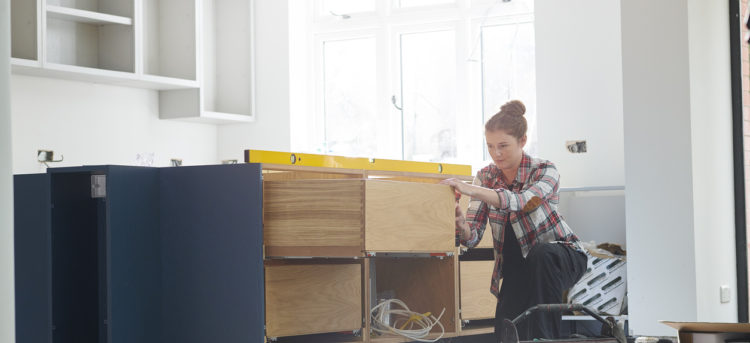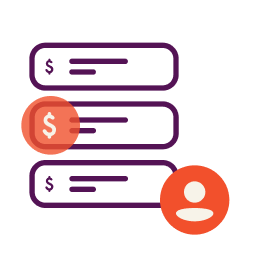Ready to start flipping houses? It can be a lucrative way to make money. But it’s not easy and you typically need to have cash to get started. If you don’t have enough money to buy a home and pay for renovations tucked away in savings, you’ll need to explore your financing options with fix and flip loans.
| Type of fix and flip loan | Recommended for investors who: |
| Hard money loan | Are experienced with 2+ flips OR |
| Are novices working with a contractor | |
| Have lower credit scores | |
| Can’t qualify for other financing | |
| Cash-out refinance | Have existing properties with at least 30 – 40% equity |
| Home equity line of credit | Homeowners who have adequateequity in their primary residence |
| Seller financing | Are able to find sellers willing to structure an unconventional sale |
| Investment property line of credit | Investors who want to leverage equity in rental properties for other purchases |
| Bridge loan | Investors who want to close quickly and plan on getting other financing later |
| Permanent bank loan/online mortgage | Buy-and-hold investors who want to flip over 5+ years |
| Business line of credit | Used for short-term working capital to help improve cash flow or finance the cost of expected expenses |
| Business credit cards | New investors who can qualify for multiple credit cards to finance reno expenses |
What is a Fix and Flip Loan?
A fix and flip loan is a short-term loan for a real estate investor who uses the funds to purchase a home and/or renovate it before selling it for a profit. It is used for business purposes, not personal.
How to Finance Fix and Flips
When it comes to real estate investments, you may not want to (or be able to) tie up all your cash in the purchase and renovation of a home you plan to sell for a profit, so you look toward a short-term loan (usually 6-18 months) to cover the expenses. You may only want a rehab loan to cover the remodeling costs, or you may want a loan to cover both the home mortgage and those remodeling costs.
Typically fix and flip loans have a fixed interest rate, and many may be balloon mortgages where you pay only interest until the end of the loan term, at which time the principal is due.
You pay the monthly mortgage payment on the loan while you renovate or have the house on the market, then pay the balance of the loan once you sell the home.
The Cost of Fixing and Flipping A Home
If you’re new to real estate investing, it’s important to factor in both the price of the home you want to buy as well as the rehab costs to remodel it. Inevitably, renovation costs are more than you account for, so plan for a buffer to ensure you don’t run out of money. If you don’t have a good grasp of renovation costs make sure you work with someone who does.
What are the Benefits of Fix and Flip Loans?
So why take out a fix and flip loan? Besides the obvious— you may not have enough money to fund a fix and flip project with cash— it frees up your cash flow so it’s not all tied up in a high-cost investment. You can continue to use the cash you have on hand to run your business while you use the loan funds for a specific real estate project.
You may also be able to afford a better property with a fix and flip loan. Maybe you have some cash you can use for your investment, but want to invest in a home that is just out of reach. A loan can help you have more buying power.
You can also diversify your investments, taking out a loan for each home you are remodeling to sell.
Types of Fix and Flip Loans
When it comes to fix and flip financing, there are nine main types to consider. Which one is best for you is dependent on your credit, your experience in real estate investing, and your financial goals.
1. Hard Money Loan
If you’re an experienced investor who has completed a few flips before, have bad credit, or are struggling to qualify for a conventional loan, one way to fund your next flip is a hard money loan.
With a hard money loan, you work with private lenders or non-bank online lenders to get the money you need. Hard money lenders usually have less strict eligibility requirements, so you can qualify for financing even if your personal or business credit scores aren’t great. And, you can often get financing quickly if the deal is right.
You may be able to find hard money loans with 100% financing of the purchase price and funds for renovations as they are typically willing to look at the after repair value or ARV. However, hard money lenders tend to charge higher interest rates than other types of loans, and they often have shorter repayment terms. This can affect the profitability of your project.
2. Cash Out Refinance Loan
Using a cash out refinance loan is a financing strategy where you refinance an existing property to fund your flip’s purchase or renovations. You use your current home’s equity to take out a new loan and pay off the existing mortgage, and you can use anything left over to finance your flip.
In order for a cash out refinance loan to make sense, you need to have sufficient equity in your home. Lenders will rarely offer loans up to 100% loan to value or LTV, so you must have enough equity to meet the lender’s requirement, and to get sufficient cash out for your project.
3. Home Equity Line of Credit
If you currently own a home beyond the house you intend to flip, you have a potential financing source with a home equity line of credit (HELOC). Home equity lines of credit are secured by your primary residence, so you can get financing at a low interest loan rate and just take what you need, up to the credit limit.
HELOCs are based on the equity you have in your home — the value of the home minus what you owe on the mortgage. You can typically tap into a HELOC if you have at least 10—20% equity in your home, though you may be able to borrow up to 85% of the home’s equity.
For example, if you owned a $200,000 home and you owed $150,000 on it, your equity is $50,000. Traditional lenders like banks may allow you to borrow up to 85% of your home’s equity, so you could get access to a $42,500 HELOC to use for your flip.
4. Seller Financing
In some cases, you may be eligible for seller financing. With this approach, you as the borrower work with the seller to come up with a payment plan and to create a contract. You’ll make payments directly to the seller on an agreed upon schedule, based on a price you both set with interest.
Because seller financing poses more risk to the original property owner, you’ll usually pay a higher interest rate and have a shorter loan term than you would with other loans. However, they can be a great way to finance a fix and flip if you’re unable to secure other financing.
5. Investment Property Line of Credit
If you own a rental property, you may be able to take advantage of an investment property line of credit. Like a HELOC, you can borrow against your real estate investment property’s equity, with the property serving as collateral.
To qualify for an investment property line of credit, a borrower usually needs good to excellent credit, and to have a history of successful real estate investments. You typically need to own the property for at least one year before you will be eligible for an investment property line of credit.
6. Bridge Loan
A bridge loan is a useful option if you need to cover the gap between when you want to buy a property and when you can secure long-term financing. Using a bridge loan can help you cover the cost of the down payment on your next flip, and then you can focus on finding another financing option, such as a traditional mortgage, to pay for the rest.
Bridge loans are typically secured by collateral, so you can qualify for a loan with a lower interest rate than you’d get with some other loan options. And, they’re often easier to qualify for than other loans for most borrowers.
7. Permanent Bank Loan/Online Mortgage
If you’re looking to buy a home that you can stay in for five years or more while you renovate it, a regular mortgage with a fixed interest rate from a traditional bank or credit union is likely your best bet. You’ll qualify for lower interest rates than you’d get with other financing options, and have up to 30 years to make payments on the loan.
However, you may need to have enough money saved for a down payment and stable income to qualify for a mortgage. Traditional mortgage lenders will require you to pass a fairly rigorous underwriting process including credit checks and an appraisal.
8. Business Line of Credit
If you’re an experienced real estate flipper and have a history of completed deals and profits, another financing option is a business line of credit. With a business line of credit, you get access to a revolving credit line. You borrow up to your available credit line, but you only make payments and pay interest one the amount you actually use.
Business lines of credit are especially useful for home flippers, as you can use yours again and again when issues pop up. Or, you can tap into it when you tackle your flip.
Various lenders offer business lines of credit, but you typically need to have excellent credit and a stable history of flipping success to qualify.
9. Business credit cards
If none of these loan options fit what you need, consider using business credit cards, especially if you mainly need to finance the expenses to remodel the property. The advantage of business credit cards is that many do not report to personal credit, and therefore the balances you carry won’t affect your credit scores unless you default. However, interest rates can be high. (Look for low-rate credit cards, including 0% APR credit cards if possible.)
What To Look For In A Fix And Flip Lender
As you start considering the types of rehab loans that would be a good fit for your distressed property investment, look at all construction loan real estate options, from conventional lenders to non-bank lenders specializing in real estate lending.
Be sure to shop around. One company may have higher interest rates or less favorable terms than another. One lender might let you take out multiple loans at a time. The key is finding a lender that meets your needs with the right house flipping loan.
Disadvantages of a Fix and Flip Loan
It can be challenging for new investors with little cash or bad credit to get started. To successfully flip properties you first need to find them, get the financing to buy them and then successfully rehab and sell them. It can be a lot!
Fix and flip loans can be more expensive than traditional mortgages. If you can’t sell the property as quickly as you like you may have high carrying costs.
Be sure to investigate financing options and talk to lenders— from conventional lenders to non-bank lenders specializing in real estate lending— before you find the property you want to buy. In a competitive real estate market, you’ll need to act quickly.
FAQs
Fix and Flip vs. Traditional Home Loans
Fix and flip loans are designed for investment properties and carry short repayment terms, with interest-only payments being common. Traditional home loans are usually amortized over 30 years (or 15-20 years if the borrower chooses that option).
In addition, fix and flip loans may be available for a variety of property types (including multi-family or even commercial real estate) while many traditional home loans are usually designed for single-family residential real estate.
Fix and Flip vs. Construction Loans
With a new construction loan, the lender is typically funding the construction of a property from start to finish. Fix and flip loans are usually used to renovate an existing property for resale.
What Is The 70% Rule In House Flipping?
This rule of thumb suggests an investor should not pay more than 70% of a home’s after repair value (ARV), including renovation costs, for a property it plans to flip. This leaves roughly 30% of equity available as profit when the property is sold, and provides some buffer if costs are higher than expected.
How can I finance a flip with no money down?
To finance a flip property with no money down you’ll have to use one or more of the financing methods outlined in this article. If you are new to real estate investing, a hard money lender or equity from your current home (if available) may prove to be your best options.
The Bottom Line
If you intend to start flipping houses but are short on cash, there are multiple small business loans and financing options available to make your dreams a reality. But you’ll need to be creative and persistent to find the right loan for your business. When considering your options, make sure you compare options from multiple lenders to make an informed decision.
This article was originally written on October 30, 2019 and updated on February 3, 2023.



Have at it! We'd love to hear from you and encourage a lively discussion among our users. Please help us keep our site clean and protect yourself. Refrain from posting overtly promotional content, and avoid disclosing personal information such as bank account or phone numbers.
Reviews Disclosure: The responses below are not provided or commissioned by the credit card, financing and service companies that appear on this site. Responses have not been reviewed, approved or otherwise endorsed by the credit card, financing and service companies and it is not their responsibility to ensure all posts and/or questions are answered.